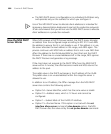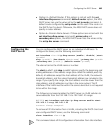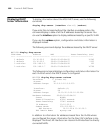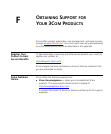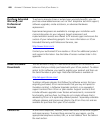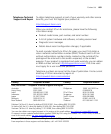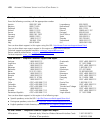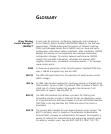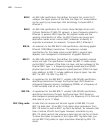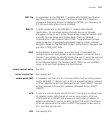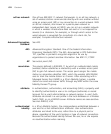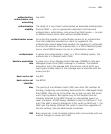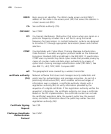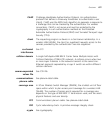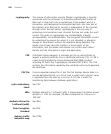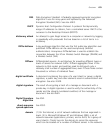672 GLOSSARY
802.2 An IEEE LAN specification that defines the logical link control (LLC)
sublayer, the upper portion of the Data Link layer. LLC encapsulation
can be used by any lower-layer LAN technology. Compare 802.3;
Ethernet II.
802.3 An IEEE LAN specification for a Carrier Sense Multiple Access with
Collision Detection (CSMA-CD) network, a type of network related to
Ethernet. In general, 802.3 specifies the physical media and the
working characteristics of LANs. An 802.3 frame uses source and
destination media access control (MAC) addresses to identify its
originator and receiver (or receivers). Compare 802.2; Ethernet II.
802.3z An extension to the IEEE 802.3 LAN specification, describing gigabit
Ethernet (1000 Mbps) transmission. The extension includes
specifications for the media access control (MAC), physical layer,
repeater, and management characteristics of gigabit Ethernet.
802.11 An IEEE LAN specification that defines the mobile (wireless) network
access link layer. The specification includes the 802.11 media access
control (MAC) sublayer of the Data Link layer, and two sublayers of the
Physical (PHY) layer — a frequency-hopping spread-spectrum (FHSS)
physical layer and a direct-sequence spread-spectrum (DSSS) link layer.
Later additions to 802.11 include additional physical layers. See also
802.11a; 802.11b; 802.11g; 802.11i.
802.11a A supplement to the IEEE 802.11 wireless LAN (WLAN) specification,
describing transmission through the Physical layer (PHY) based on
orthogonal frequency division multiplexing (OFDM), at a frequency of
5 GHz and data rates of up to 54 Mbps.
802.11b A supplement to the IEEE 802.11 wireless LAN (WLAN) specification,
describing transmission through the Physical layer (PHY) based on
direct-sequence spread-spectrum (DSSS), at a frequency of 2.4 GHz and
data rates of up to 11 Mbps.
802.11b/g radio A radio that can receive and transmit signals at IEEE 802.11b and
802.11g data rates. 3Com 802.11b/g radios allow associations from
802.11b clients as well as 802.11g clients by default, for networks that
have a mixture of both client types. However, association by any
802.11b clients restricts the maximum data transmit rate for all clients.
To allow the radios to operate at the higher 802.11g data rates, you
can set 802.11b/g radios to reject association attempts by 802.11b
clients.



